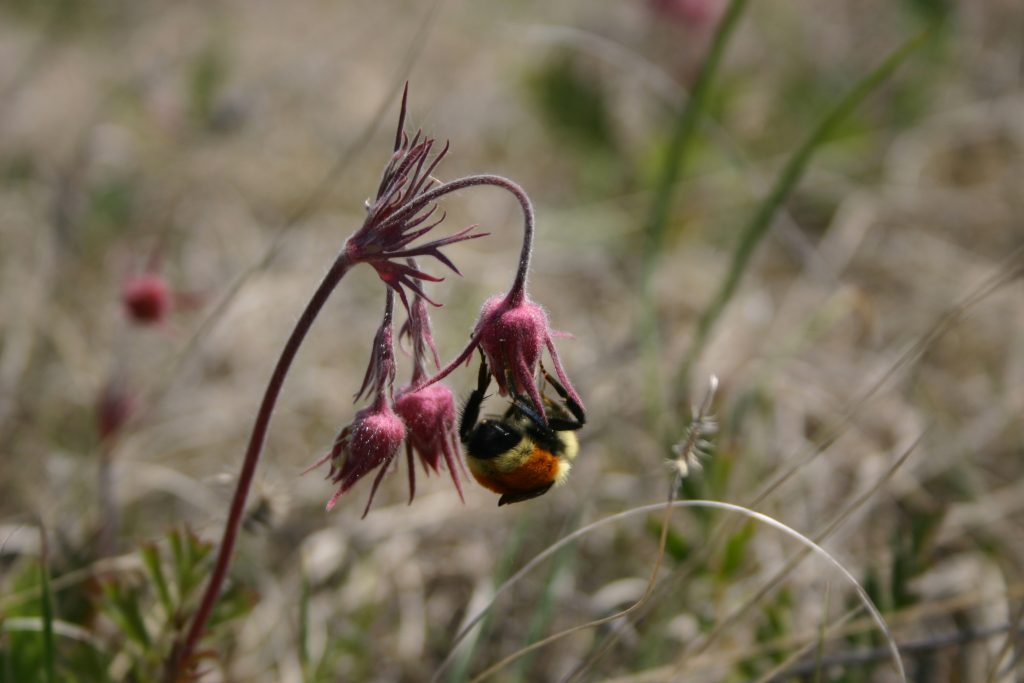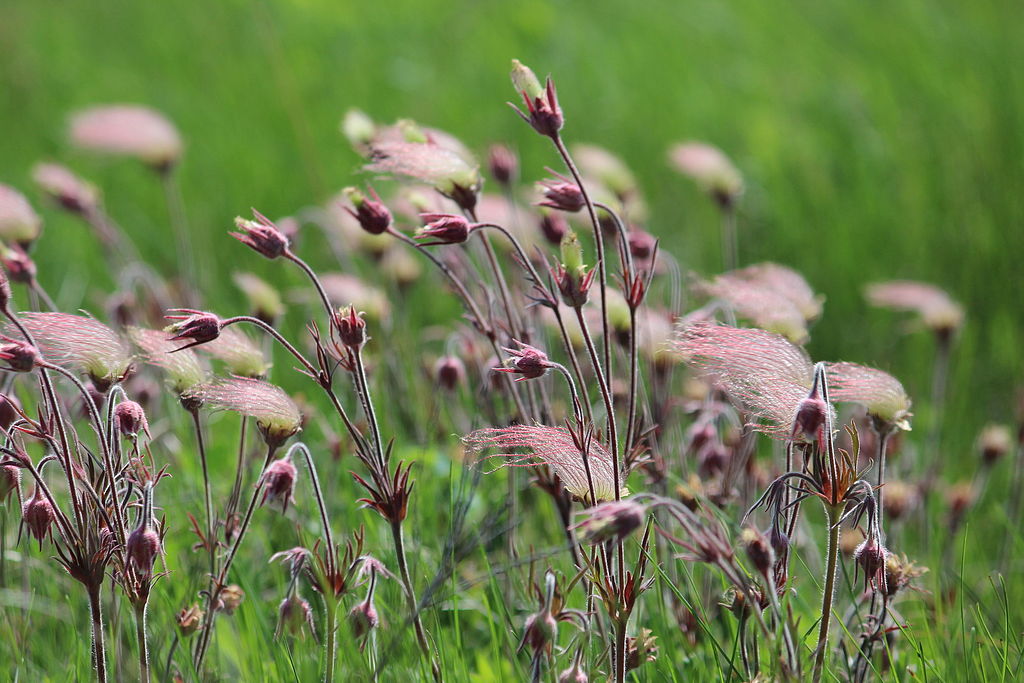In celebration of National Wildflower Week we're highlighting some of our favorite "weird and wonderful" plants for pollinators. You can find the best plants for pollinators anytime with our plant lists.
Prairie Smoke
Geum triflorum
Where there’s smoke, there’s fire - but where there’s prairie smoke, there are bumble bees, buzz-pollination, and a bit of thievery.
As the common name implies, prairie smoke is primarily native to North American prairies, but it also grows throughout the western states and has a wide northern range from Washington to New York, and across nearly all of the Canadian provinces. A low-growing perennial, pink, nodding flowers emerge over deeply lobed, fern-like foliage April through May. As early-bloomers, they are especially valuable to bumble bee queens that have overwintered and are in need of resources in the spring. In fact, these are the primary pollinators of the flower.

Employing the same buzz-pollination that makes the bees such valuable pollinators of crops such as tomatoes and blueberries - a bumble bee will grasp the globe-shaped flower and beat her wings to shake the pollen onto her abdomen for collection. She’ll rake the pollen, combine it with nectar, and pack it into her corbicula (pollen basket). Some pollen will remain and will be transferred to the next flower.
Nectar thieves - including wasps, beetles, and bees - cut to the chase by chewing small openings at the top of the flower to access nectar. Ants, aided and abetted by these blossom bandits, use these openings to access nectar as well.
While the flowers are pretty enough in their own right, it’s what happens after the bloom that gives prairie smoke its poetic name. After pollination, the flowers erupt into airy, gauzy seed heads with thread-like structures reaching for the sky. On sunny days these seed heads catch the light looking like a garden of smoke (or garden of troll dolls, depending on your point of reference). The show doesn’t stop there, however, the gray-green foliage is semi-evergreen, turning an orange-red in the fall, and fading to purple where it remains present over the winter.

Best for: Supporting bumble bees, garden interest.
Native Range: Widely distributed across western North America from the far Northwest Territories of Canada to Arizona and New Mexico. In the East prairie smoke is native across the northern tier of U.S. states surrounding the great lakes and as far west as New York.
Growing conditions: Grows in full sun to partial shade. Prefers medium to dry, sandy soils.




